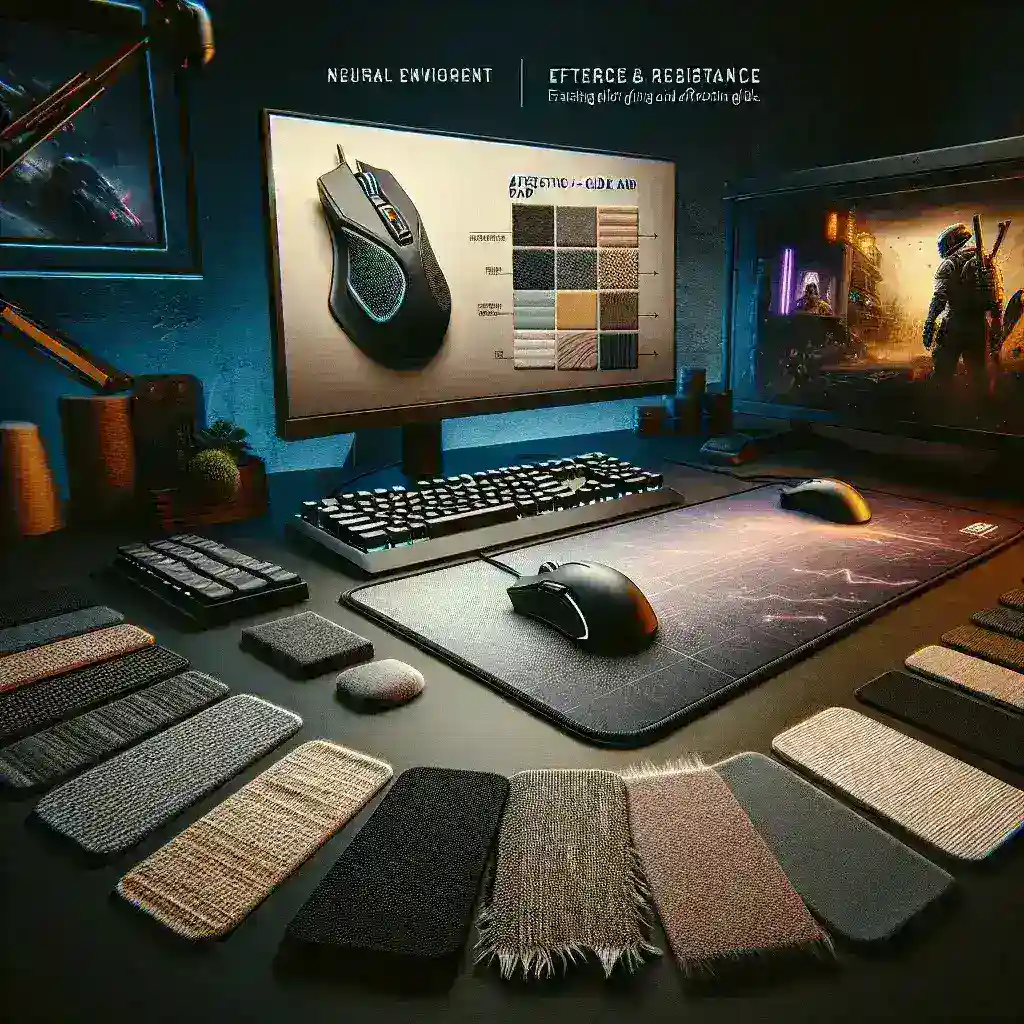In the competitive world of gaming, every detail counts. One often-overlooked aspect that can significantly influence performance is the material of a mouse pad. The glide and resistance offered by different mouse pad materials play a crucial role in how precise and responsive a gamer can be, affecting everything from aim accuracy to overall control. Understanding these factors can help gamers optimize their setup for peak performance.
| Mouse Pad Material | Glide Level | Resistance Level | Best Use |
|---|---|---|---|
| Cloth | Medium | High | FPS and multipurpose |
| Hard Plastic | High | Low | Fast-paced gaming |
| Metal | High | Low | Precision tasks |
| Glass | Very High | Very Low | Professional gaming |
| Hybrid | Variable | Medium | Versatile gaming |
Understanding Mouse Pad Materials
Mouse pads are made from various materials, each offering unique advantages and disadvantages. The three primary categories are cloth, hard, and hybrid materials. Let’s delve into each type and how it affects glide and resistance.
Cloth Mouse Pads
Cloth mouse pads are popular among gamers due to their excellent control characteristics. Composed of textile materials, these pads provide a high level of friction, which helps in making precise movements. They tend to be more forgiving when it comes to subtle adjustments, making them ideal for first-person shooter (FPS) games and other genres that require precision.
Advantages:
- High resistance allows for controlled and accurate movements.
- Comfortable to the wrist and arm.
- Great for slower-paced games.
Disadvantages:
- Slower glide compared to hard surfaces.
- Can accumulate dirt and require frequent cleaning.
Hard Mouse Pads
Hard mouse pads, often made from materials like plastic, provide a different experience. These surfaces tend to have low friction, which allows the mouse to glide smoothly with minimal resistance. This characteristic is perfect for high-speed gaming scenarios, where quick reactions and fast movements are vital.
Advantages:
- Excellent for fast-paced and competitive gaming.
- Easy to clean and maintain.
- Consistent performance in terms of glide.
Disadvantages:
- Less control compared to cloth pads.
- May cause more wrist strain due to harder surfaces.
Metal Mouse Pads
Metal mouse pads are less common but offer unique benefits. They provide a very high glide with minimal resistance, making them perfect for professionals who rely on precision. The smooth surface allows for quick movements without the hindrance of friction.
Advantages:
- Highly durable and long-lasting.
- Very low resistance for fast movements.
- Excellent tracking for high DPI settings.
Disadvantages:
- Can be uncomfortable for long sessions without a wrist pad.
- Specific mouse sensors may not track well on metal.
Glass Mouse Pads
Glass mouse pads offer an interesting alternative with smooth surfaces providing very high glide levels. This material is favored by some professional gamers as it allows for very precise movements.
Advantages:
- Very low resistance allows for effortless glide.
- Durable and aesthetically pleasing.
- Consistent surface for tracking accuracy.
Disadvantages:
- Can be slippery for users preferring a more controllable surface.
- Less cushioned for prolonged use.
Hybrid Mouse Pads
Hybrid mouse pads combine different materials to offer a mix of glide and control. They can provide a balance that suits a wide range of gaming styles, allowing users to adapt to different games and play styles.
Advantages:
- Versatile and adaptable for multiple gaming types.
- Balanced glide and control.
Disadvantages:
- May not excel in specific categories (e.g., pure speed or pure control).
Factors Influencing Glide and Resistance
Several factors influence how the material of a mouse pad interacts with a mouse sensor and affects glide and resistance:
DPI Settings
DPI, or dots per inch, indicates how sensitive a mouse is to movement. A higher DPI setting means more sensitivity, which can be enhanced by the right mouse pad material. Players using higher DPI often benefit from harder mouse pads, while lower DPI settings can take advantage of the control offered by cloth pads.
Mouse Sensor Type
The type of sensor in your gaming mouse (optical vs. laser) also plays a role. Optical sensors tend to perform better on textured surfaces such as cloth, whereas laser sensors can work more effectively on smooth, hard surfaces.
Playing Style
Your playing style is essential to consider. If you primarily play fast-paced games where quick movements are essential, a hard pad might suit you better. However, for genres requiring meticulous control, like strategy games, a cloth pad could be more beneficial.
Conclusion
In summary, the material of your mouse pad significantly affects glide and resistance during gaming, directly influencing performance. Cloth mouse pads provide excellent control, whereas hard surfaces offer speed. Metal and glass provide specialized options for those who prioritize precision and glide. Ultimately, the best choice relies on your personal preference, playing style, and gaming needs. Experimenting with different materials can help you find your optimal setup, ensuring you have the edge for every match.

